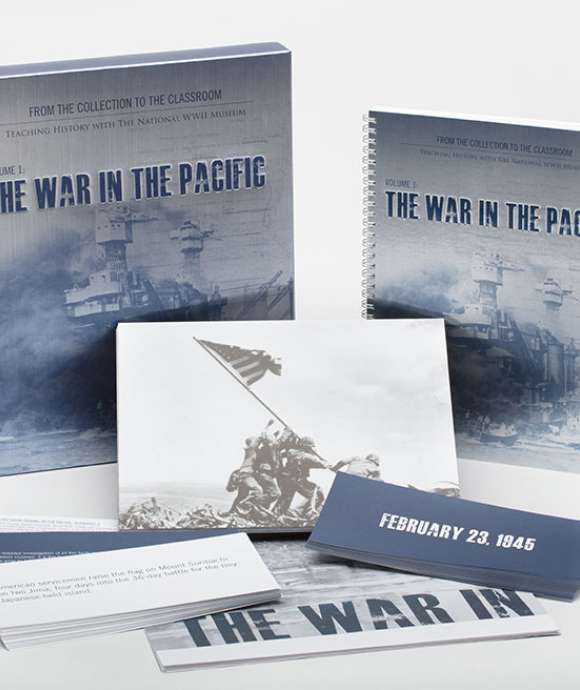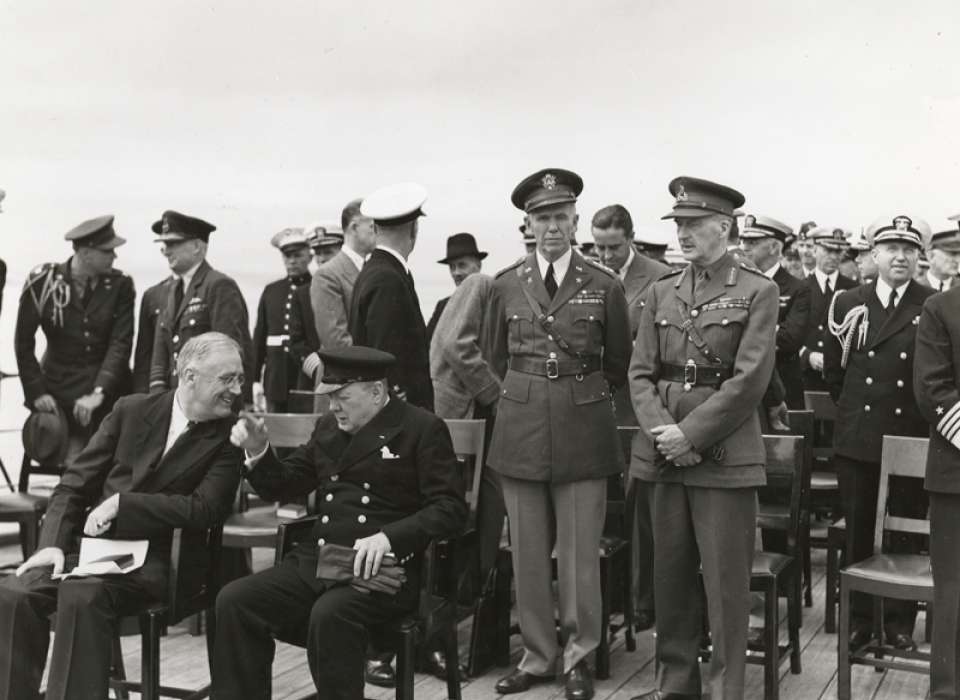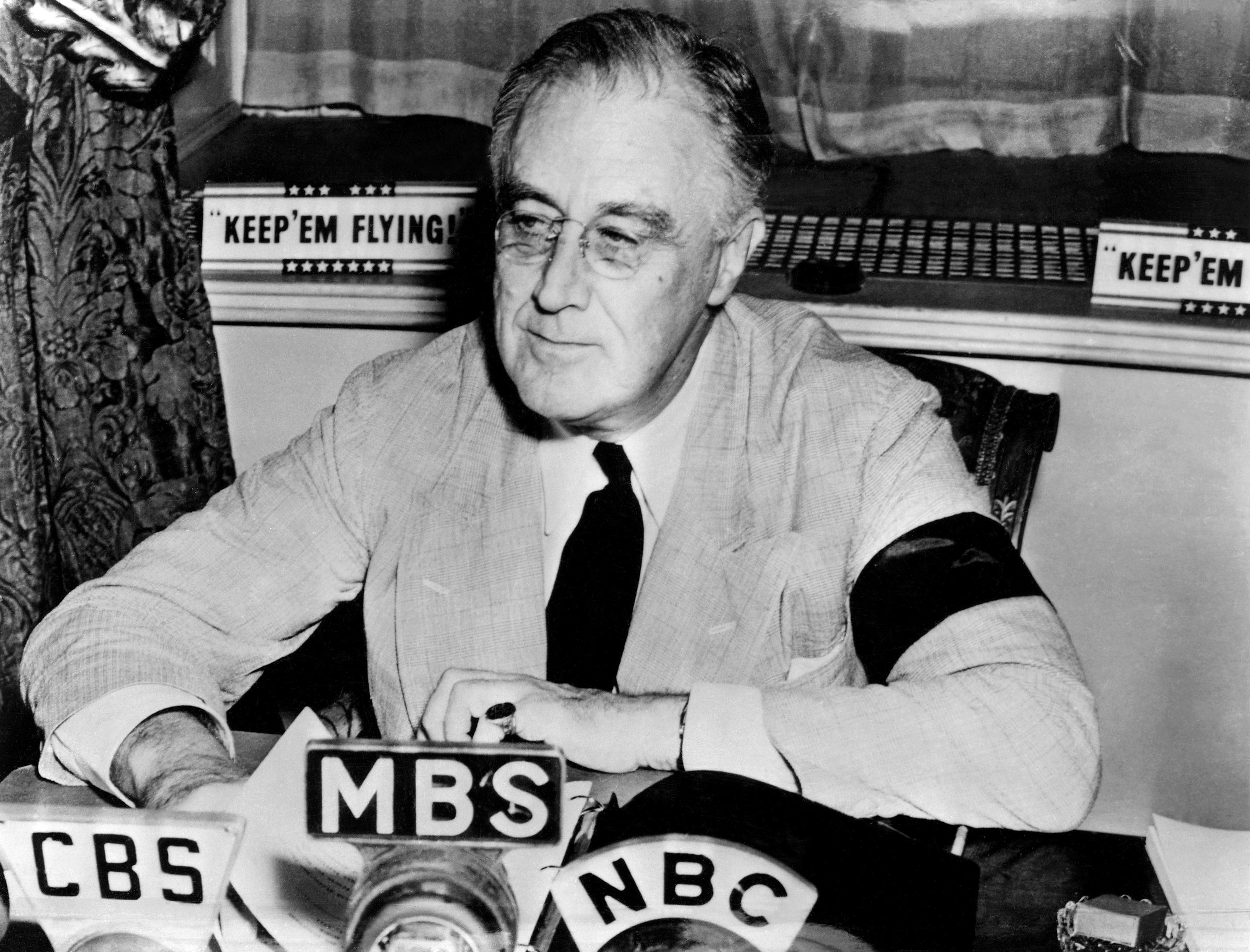Primary Image: President Franklin Delano Roosevelt and British Prime Minister Winston Churchill meet aboard the HMS Prince of Wales during the Atlantic Conference, August 10, 1941. (Franklin D. Roosevelt Presidential Library & Museum, 48-22:3626(56).
When World War I ended in 1918, the American public was eager to reduce the country’s involvement in world affairs. The war had been tremendously costly. Over 200,000 American soldiers were killed or wounded. President Woodrow Wilson wanted the United States to help keep the peace in Europe, but the US Congress blocked his attempt to have America join the recently created League of Nations. Voters then registered their disapproval of Wilson’s diplomatic initiative by choosing the isolationist Republican Warren G. Harding in the 1920 presidential election. Harding promised to keep the nation’s foreign policy focused tightly on American interests. The nation didn’t need heroics, he declared. It needed a return to “normalcy.”
The country’s isolationist mood did not change markedly through the 1920s and early 1930s, but conflicts in Europe and Asia tested America’s determination to steer clear of foreign troubles. In 1931, Japan invaded the Chinese province of Manchuria and ignored a League of Nations resolution to withdraw. Adolf Hitler assumed power in 1933 and began rebuilding the German military in violation of his nation’s post-World War I treaty obligations. In 1935, dictator Benito Mussolini invaded Ethiopia with the aim of establishing a new Italian empire. None of these developments directly threatened the United States, but they did raise an important question: Under what conditions would the United States respond to world events?
“Our own troubles are so numerous and so difficult that we have neither the time or inclination to meddle in the affairs of others.”
Congresswoman Edith Nourse Rogers
Most Americans hoped their government would stay focused on domestic problems. Millions of families were still out of work due to the Great Depression, while the darkening situation abroad reinforced the idea that it would be unwise for America to intervene in international conflicts where vital national interests were not at stake. “Our own troubles are so numerous and so difficult,” said Congresswoman Edith Nourse Rogers, “that we have neither the time or inclination to meddle in the affairs of others.” To prevent the United States from being drawn into future foreign wars, Congress passed a series of Neutrality Acts banning American citizens from trading with nations at war, loaning them money, or traveling on their ships.
Hitler’s invasion of Poland shook but did not shatter America’s commitment to isolationism. Anti-intervention organizations like the America First Committee featured renowned aviator Charles Lindbergh and popular radio priest Father Charles Coughlin to convince the public that American military involvement in the European war was both unnecessary and dangerous. The United States would be fighting an enemy more prepared for war than it was, and Nazi Germany, the anti-interventionists insisted, posed no direct threat. An influential bipartisan group of congressmen supported this position.
President Franklin Delano Roosevelt, elected in 1933, was convinced, however, that America would eventually have to take a stand against Nazi Germany. As Hitler began his march of conquest, Roosevelt searched for ways to aid the Allies without violating American neutrality. In November 1939, he convinced lawmakers to allow American manufacturers to sell arms and supplies to belligerent nations on a cash-and-carry basis. This allowed the British to buy American goods as long as they paid up front and transported them in their own ships. The president also gave the British 50 surplus US destroyers in return for leases on small patches of British territory in the Western Hemisphere.
Once France fell to Hitler in June 1940, Great Britain was the only remaining unconquered country in the world still at war with Hitler. Roosevelt began sending the imperiled island nation tanks, warplanes, food, and ammunition. In a nationwide radio broadcast, he asserted that the best policy for keeping the United States out of war was to become “the arsenal of democracy,” extending full matériel support to the Allies. With pressure from Roosevelt, Congress passed the Lend-Lease Act in March 1941, authorizing the president to lend war supplies to nations whose defense he deemed vital to American security.
Roosevelt quietly provided limited military support as well. When German submarines threatened American shipping in the North Atlantic, the president authorized the US Navy to help escort Allied ships and “shoot on sight” U-boats or surface raiders entering America’s self-imposed “defense zone.” In August 1941, Roosevelt and Winston Churchill met off the coast of Newfoundland and hammered out the Atlantic Charter, articulating the war aims of the two democracies and their shared vision for the postwar world. Roosevelt had hoped this dramatic declaration would help swing American opinion toward more vigorous support of England, but ultimately it changed few minds. Leading isolationists saw the Atlantic Charter as evidence of a secret commitment by Roosevelt to pull the United States into the war.
Ironically, the United States became fully involved in the European war as a result of events that took place on the other side of the globe. On December 7, 1941, Japanese carrier planes attacked the American fleet at Pearl Harbor, Hawaii, knocking out over 200 planes and sinking or damaging eight battleships, the pride of the US Pacific fleet. The following day, Congress declared war on Imperial Japan. Germany and Italy—Japan’s allies—responded by declaring war against the United States.

Like this article? Read more in our online classroom.
From the Collection to the Classroom: Teaching History with The National WWII Museum
After Japan struck Pearl Harbor, Churchill hurried to Washington to meet with Roosevelt. Though American public opinion was decidedly in favor of retribution against Japan, the two leaders agreed that Nazi Germany posed the greater, more immediate threat. The Allies would pursue a “Germany first” strategy while still putting up a resolute fight against Japan. (In 1943, there would be almost as many American military personnel in the Pacific as there were in Europe.) Tough times lay ahead after Pearl Harbor, but Roosevelt and Churchill were relieved the United States was finally able to act decisively and with full strength. “I can’t describe the feelings of relief with which I find . . . the United States and Britain standing side by side,” Churchill told the press. “It is incredible. Thank God.”
Cite this article:
MLA Citation:
APA Citation:
Chicago Style Citation:


![Max Fuchs, New York City cantor, sings as Rabbi Sydney [sic] Lefkowitz, Richmond, VA, conducts the first Jewish services from Germany.](/sites/default/files/styles/max_650x650/public/2025-10/image1.jpg)






